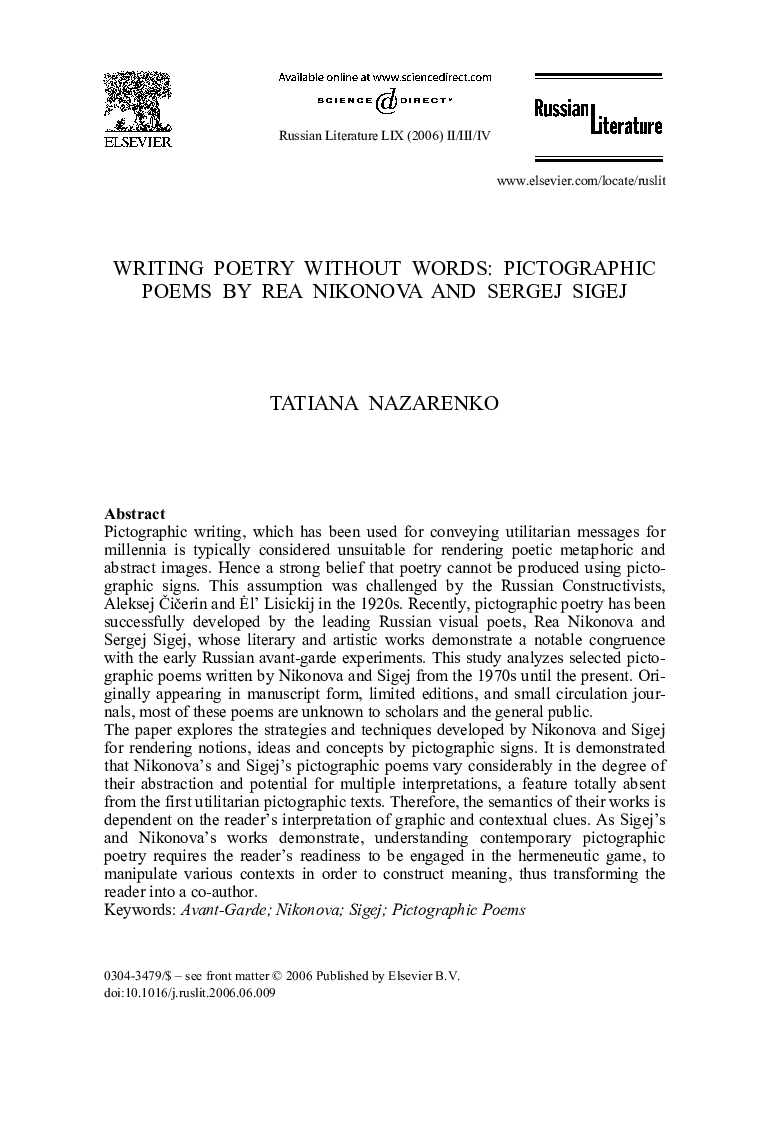| کد مقاله | کد نشریه | سال انتشار | مقاله انگلیسی | نسخه تمام متن |
|---|---|---|---|---|
| 1104345 | 1488216 | 2006 | 31 صفحه PDF | دانلود رایگان |

Pictographic writing, which has been used for conveying utilitarian messages for millennia is typically considered unsuitable for rendering poetic metaphoric and abstract images. Hence a strong belief that poetry cannot be produced using pictographic signs. This assumption was challenged by the Russian Constructivists, Aleksej Čičerin and Ėl' Lisickij in the 1920s. Recently, pictographic poetry has been successfully developed by the leading Russian visual poets, Rea Nikonova and Sergej Sigej, whose literary and artistic works demonstrate a notable congruence with the early Russian avant-garde experiments. This study analyzes selected pictographic poems written by Nikonova and Sigej from the 1970s until the present. Originally appearing in manuscript form, limited editions, and small circulation journals, most of these poems are unknown to scholars and the general public.The paper explores the strategies and techniques developed by Nikonova and Sigej for rendering notions, ideas and concepts by pictographic signs. It is demonstrated that Nikonova's and Sigej's pictographic poems vary considerably in the degree of their abstraction and potential for multiple interpretations, a feature totally absent from the first utilitarian pictographic texts. Therefore, the semantics of their works is dependent on the reader's interpretation of graphic and contextual clues. As Sigej's and Nikonova's works demonstrate, understanding contemporary pictographic poetry requires the reader's readiness to be engaged in the hermeneutic game, to manipulate various contexts in order to construct meaning, thus transforming the reader into a co-author.
Journal: Russian Literature - Volume 59, Issues 2–4, 15 February–15 May 2006, Pages 285-315